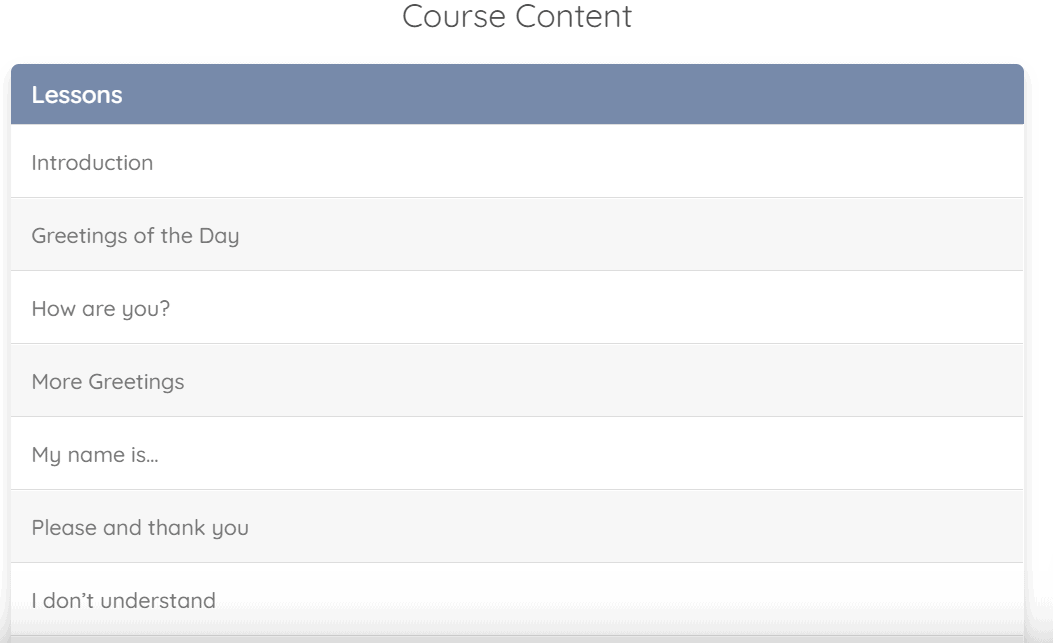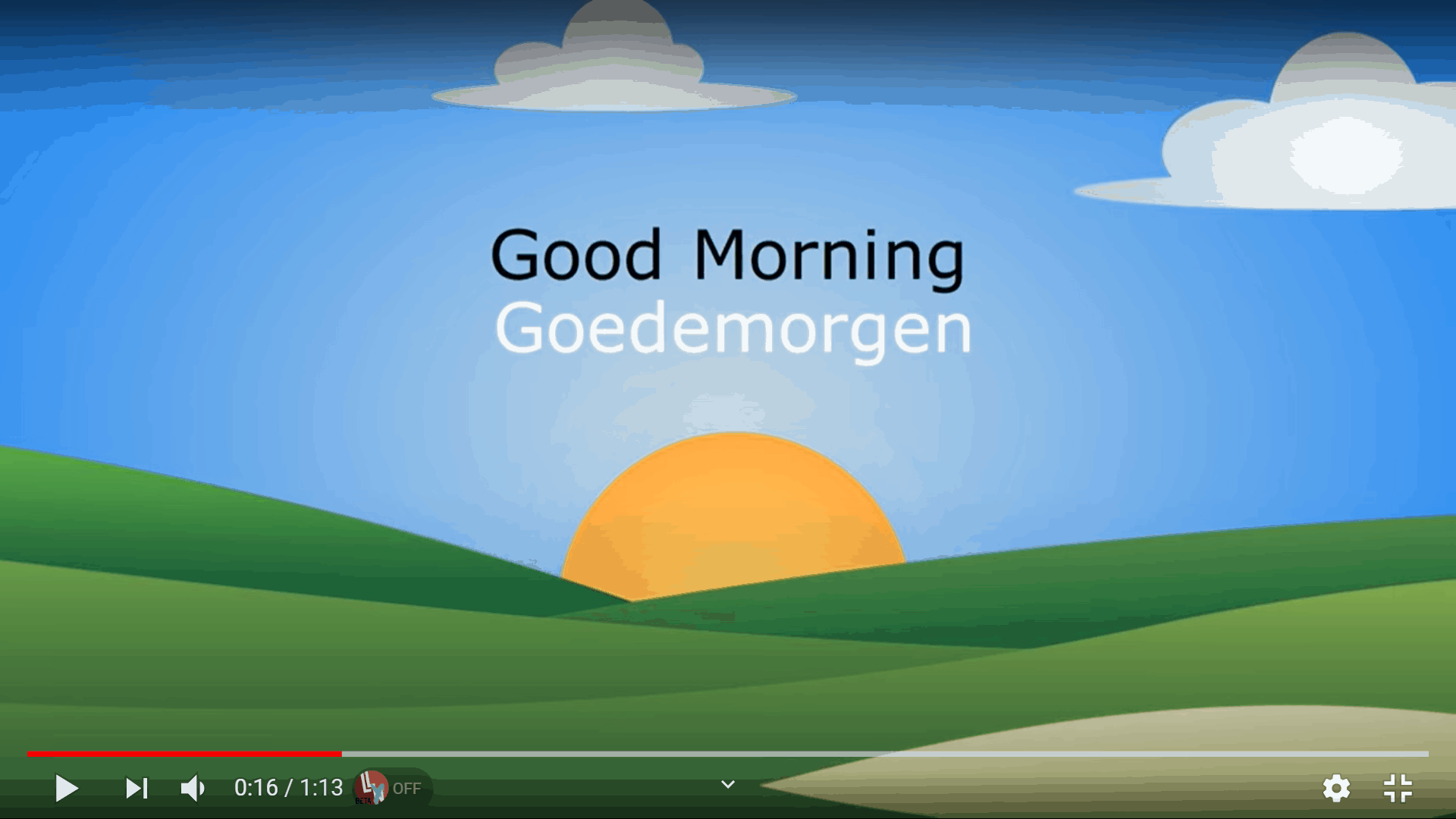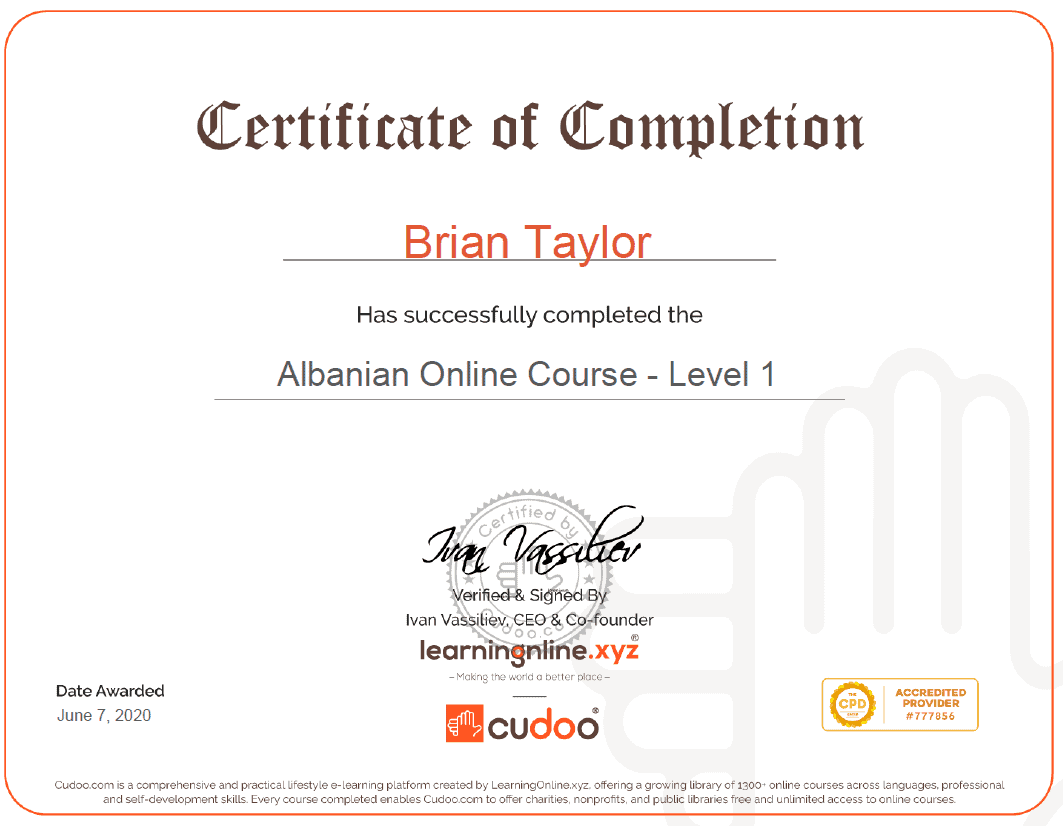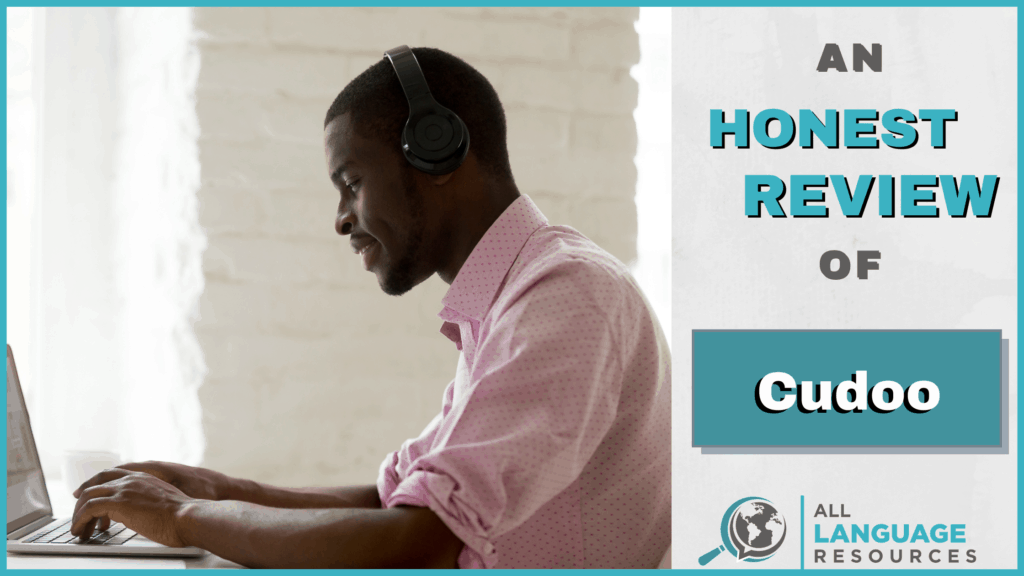Cudoo

Summary
Cudoo is an online learning platform that offers courses in over 160 languages. The platform also offers courses teaching soft skills and other professional development courses. Certificates are available upon course completion, and courses are provided to libraries and non-profits for free. We feel that the quality of the language courses is quite low, and that the prices are relatively high.
It’s nice to have native speaker audio, but I personally found the course to offer very little learning potential.
The course didn’t cover everything listed under “Course Content” and offers no explanations.
This course is way overpriced in my opinion. I wouldn’t even use it if it were free.
I Like
- Audio by a variety of native speakers.
I Don’t Like
- I wanted more explanations
- Practice opportunities felt severely limited
- I found the material unengaging
- Content doesn’t build on itself logically.
Price
Price varies by course, from $4.99 to $24.99, with language bundles costing up to $199.
This seems like a reasonable list of goals, depending on the meaning of “…and more!” even if it is a little bit light for the $25 price tag.
Once you’ve purchased the course, there’s a further list of content that the course will allegedly cover. Unfortunately, the course doesn’t even remotely touch on two of the topics mentioned in the list: the days of the week or how to tell time.
Lessons
The interface is extremely straightforward and easy to use. There is a list of lessons that make up a course, and you can click on one to begin. A preview of the lessons is shown on the course advertisement page:

As you can see, the lessons are basic and aptly titled.
The lessons themselves are all very similar and, to me, feel like someone who’s watched a few tutorials on PowerPoint transitions put together a slideshow with stock images and translations.

The above image is taken from a demo video on the Cudoo parent company’s Youtube channel. A basic image, the target language, and a translation are what teach the language here and in the Albanian course. There’s also native speaker audio, which is great.
The aesthetic in this slide is one that persists through the entire course; I find it pretty dull.
The lessons involve a lot of direct translations of words and phrases and not much else. One of the few positives with the course is that the audio is recorded by a variety of native speakers. Hearing different speakers producing Albanian was helpful for me.
I thought that one of the areas in which the Albanian Cudoo course was lacking most was in the practice opportunities. There are a couple of review activities with slightly different mechanics, but they all only test your ability to translate a word or phrase.
I found the multiple-choice questions to be painfully uninteresting and basic, especially when covering such a limited amount of information. Several lessons in the Albanian course contained only two review questions.
There’s also a drag-and-drop exercise, which I thought was a little bit more engaging but still too basic. In one of them, the task is to match the Albanian names for countries to the English names, most of which are very similar.
When the answers are all cognates, it’s hard for me to see the value in matching up words that look like the translations. This is one of many hints that make it seem like Cudoo courses are all created from the same blueprint and that they don’t take into account the specific language being taught.
After completing a lesson, all of which took me less than five minutes to complete, you’ll see a summary of what you’ve learned. The summaries are all very brief in the Albanian course, as the lessons don’t include many review activities.
What Cudoo Does Wrong
There are quite a few items in this category. I’ll focus on the ones that I found most frustrating.
Not Enough Practice
The lack of practice opportunities is the biggest foul in my opinion. There’s little chance for listening practice and none for writing practice in the Albanian Level 1 course, and even the vocabulary practice is limited to a few review questions at the end of each lesson. In one lesson which taught 10 new words, I was only tested on 5 of them at the end of the lesson.
Other than these practice activities at the ends of lessons, there’s no guided way to practice vocabulary. For me, this makes for material that’s easy to blow through without retaining anything, which is pretty much what I did. I actually completed the course in less than two hours, which I find exceptionally bad for something that costs $25.
There’s also no spaced repetition (SRS) in the course, which makes it notably inferior to most other language resources in my opinion.
No Explanations
The Albanian course on Cudoo is completely devoid of explanations beyond translations. There were lessons allegedly teaching the verb, “to be,” but all instruction happened through examples. The learner assumes the responsibility of identifying the rules and conjugations for the verb given examples that aren’t clear.
The lesson supposedly used the phrase, “I am well, thanks” to teach “I am.” The Albanian translation, however, doesn’t include a verb! It’s far more common to simply say “good, thank you” in Albanian.
I would have found the lesson much more effective had it underlined the “to be” verb in the Albanian examples.
Also, one of the example sentences in this lesson was, “We are ready to start distribution.” Why teach the word “distribution” in the intro course? “We are hungry/ready/lost/tired” would have been much more useful and digestible.
No Individual Translations
Phrases are translated as complete items in the intro Albanian course, meaning it can be impossible to single out the meanings of individual words without a dictionary.
One flashcard, for example, taught the phrase, “My room key, please.” I was able to infer that ju lutem meant “please,” but I was at a loss for what the other words meant, especially because they don’t appear elsewhere in the course.
This made it unreasonably difficult for me to remember the whole phrase, one which I’m not particularly interested in learning right away anyway.
Too Much Too Fast
Another sign that the courses probably aren’t created for specific languages, the material doesn’t build on itself in a way that makes sense to me. In the Albanian course, you’ll go from learning short basic phrases to sentences like,
A mund ti thuash të më telefonojë më pas? Numri im është 291377.
It means, “Could you ask him to call me back? My number is 291377.”
I really don’t like the idea of memorizing a long phrase like this without knowing what the majority of the words mean individually. I also find it demotivating to run into overly complex material like this when I’m not ready for it.
What makes this worse, is that the audio for most of the longer utterances is recorded at native or near-native speed. If I haven’t tried producing any of the words individually, there’s just no way that I’ll be able to mimic a multi-sentence phrase at full speed.
I might be able to approximate the phrase after a lot of focused effort and repetition, but it’s a highly inefficient way to learn pronunciation in my experience.
Course Certificate
Here’s the certificate I earned with Cudoo in under two hours.

It’s just a certificate of completion — it doesn’t state that I’ve reached any particular level of Albanian — which is fine. Certificates for participation aren’t uncommon, and I doubt that you’d actually be able to use this certificate in any way.
What rubs me the wrong way is that this certificate is accredited by the CPD Certification Service, which is something that Cudoo advertises. I tried looking into what it takes to become accredited, but the only suggested qualification I came across was a paid membership with CPD.
This might not be such a big deal for many people, but I feel like a course that’s $25 and offers a certificate for an “accredited” course better offer more than a slideshow with translations.
Alternatives
Even for a less common language like Albanian with a shortage of good resources, I strongly believe that you can do better than Cudoo — for free. If you’re studying a more popular language, definitely don’t use Cudoo. There are plenty of great resources that offer a whole lot for less money.
If you’re studying a less common language, consider the following options. They’re all miles ahead of Cudoo in my book.
Memrise
Memrise is a decent place for getting vocabulary practice in just about any language. There are tons of user-created courses that are free to use and cover a variety of language focuses. The quality varies from course to course (some have audio and pictures, some don’t), but they all use SRS, which I think makes them more effective than Cudoo. Memrise review.
uTalk
If you insist on a resource that only teaches set phrases, go with uTalk over Cudoo. It’s got a slick app, uses games, lets you practice pronunciation, and is only $2.99/month! It certainly won’t bring you to fluency, but it offers courses in over 140 languages and is a reasonable place to get exposure to a less common language. uTalk review.
Glossika
Glossika teaches languages through spaced repetition and repetition of spoken phrases. It’s an intuitive approach that isn’t suitable for beginners, but it’s a good place to get speaking practice. This is especially true for less common languages, as it offers courses in more than fifty (though not Albanian, unfortunately). It isn’t the cheapest option out there, but a subscription grants access to courses in all of its languages. Glossika review.
Anki
If you’re up for customizing your own study materials, check out Anki. It’s a powerful, lightweight SRS flashcard program that can be tweaked to help you study anything. There’s a little bit of a learning curve, but it’s worth it for those that put in the effort. There are also some pre-made decks from other users for those that don’t want to spend time setting up their own. Anki is free everywhere except for the Apple App Store, where it costs $25.
italki
When studying a rarer language, don’t overlook the possibility of getting a real tutor! italki is an online tutor directory with teachers of a great number of languages. Teachers set their own rates, meaning you’ll likely find quite a variety. There isn’t much that beats getting personalized instruction from a real person. italki also has a nifty language exchange feature that’s free to use. italki review.
HelloTalk and Tandem
Finally, consider HelloTalk and Tandem. They’re both language exchange apps that are mostly free to use and will hook you up with native speakers of a huge number of different languages. They use built-in language tools to make communication easier and have active language learning communities. HelloTalk review. Tandem review.
Pricing
Most individual language courses are $24.99 on Cudoo. The price goes as low as $4.99 for courses that teach useful phrases and as high as $199 for all courses in a single language (usually the more popular languages).

I think the courses are far too expensive for what they offer and wouldn’t recommend paying for one.
Final Thoughts
Don’t buy a language course with Cudoo! Here are six reasons based on my experience with the Albanian Level 1 course.
- I think they’re overpriced.
- There are no language explanations other than translations.
- Entire phrases are translated as a unit rather than broken down.
- I found practice activities to be severely limited.
- I didn’t get sufficient listening, speaking, writing, or pronunciation practice.
- I completed the entire course in under two hours and retained very little.
I don’t think I would recommend this resource if it were free, much less for the $25 it actually costs.
It’s nice to hear real audio of native speakers in a less common language, which can admittedly be hard to find, but that alone isn’t worth this course’s price. No matter what language you’re studying, do yourself a favor and look elsewhere.
The best resource for learning a language is often the one that’s created specifically for that language. To find our top recommendations in your target language, check out the table below.

